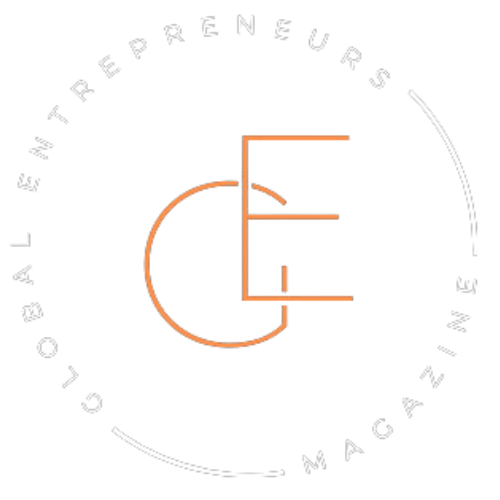It starts small.
A woman sees a gap no one else is willing to fix, a need too human for algorithms to notice. She doesn’t raise her voice about it—she rolls up her sleeves.
While the world obsesses over what’s trending, she’s already somewhere else—thinking years ahead. She’s not building for tomorrow’s applause. She’s building so that ten years from now, people still have something that works, something that matters.
There’s a kind of patience in how women build. A kind of wisdom that knows anything worth keeping won’t be built overnight, and anything built for optics will likely collapse just as fast as it rose.
This isn’t about hype.
It’s about staying power.
Fast fame vs. foundational thinking
Everyone loves a good rise-and-shine story.
The kind where a startup launches on Monday, goes viral by Wednesday, and gets acquired by Friday. It’s addictive to watch, even easier to romanticize. But behind the headlines, those stories often end the same way they began—fast and forgotten.
Now picture a different pace.
A woman founder who doesn’t care about trending hashtags or explosive growth charts. Maybe she started with a modest savings account and a borrowed desk. No investors. No hype. Just a plan to build something that solves a problem—and keeps solving it long after the cameras move on.
Her progress doesn’t grab attention.
Not at first.
But brick by brick, she lays down a foundation—real customers, real feedback, real improvements. While others chase the spotlight, she’s quietly designing a business that won’t buckle the moment the market shifts.
Foundational thinking isn’t glamorous.
It’s slow. Intentional.
But when the trend-chasers fade, she’s still standing.
And that’s the difference.
Women are taught to think in decades, not quarters
Ask a woman how she plans, and chances are she’s juggling timelines that stretch far beyond this quarter’s numbers. She’s thinking about how today’s decisions ripple into next year’s reality—whether that’s in business, family, or her own well-being.
This kind of thinking doesn’t come from a business playbook. It comes from life.
It comes from being the one people rely on to anticipate needs before they’re spoken. From remembering birthdays, preparing for hard conversations, budgeting for what might go wrong. It’s not reactive. It’s built-in.
So when women build, they often build like that too.
There’s care in the way they map things out. A sensitivity to consequences. A resistance to shortcuts. Growth matters, sure—but not at the cost of breaking the very system they’re trying to improve.
And while the world measures success in speed, they’re busy making sure it lasts.
Building for people, not optics
Some brands look great in a pitch deck. Slick design, bold claims, a mission statement so polished it could sell bottled air. But when you dig deeper, there’s nothing underneath—just buzzwords stacked on top of more buzzwords.
Now picture a woman founder who didn’t start with a brand strategist or a launch party. She started with a problem that bugged her. Something she saw her friends struggle with. Something she wished existed, so she built it.
No one clapped when her site went live.
There were no think pieces or Twitter threads.
Just a few customers who finally felt seen—and kept coming back.
She didn’t build it for the photos.
She built it because people needed it.
And while others were chasing metrics that looked good on paper, she was paying attention to the humans behind the numbers. What they said. What they didn’t say. What made them trust her.
In a world obsessed with looking like it matters, she quietly made something that did.
The courage to ignore the hype cycle
It takes guts to say no to the noise.
Especially when the noise sounds like opportunity.
When everyone was scrambling to add NFTs to their business model, she didn’t. When the industry swore the future was in virtual land or the latest AI-powered thingamajig, she paused. Not out of fear. Out of clarity.
She knew her work wasn’t about keeping up. It was about staying true.
There’s pressure, though. Investors ask why you’re not “exploring new spaces.” Friends wonder why you’re not capitalizing on what’s hot. But not everything hot is built to last—and not everything that lasts needs to be hot.
So she ignored the trend report.
She listened to her customers instead.
She chose the harder route. The slower one. The one with roots.
Hype can build a crowd. But clarity builds a company.
Quiet confidence beats loud disruption

The loudest founders are often the ones quoted first.
They talk big. They move fast. They call themselves disruptors before the product even works. It’s a show—and sometimes it sells.
But not always.
Some of the most quietly influential companies were built without fanfare. Just someone doing the work, serving people well, and sticking with it. No declarations of “changing the game.” No rebranding every six months to stay relevant.
That’s how she moved.
No theatrics. No slogan-packed TED talks. Just a steady hand on the wheel and a deep understanding of what her customers actually needed.
And while others shouted about how they were breaking things, she quietly became the one people trusted when things broke.
Confidence doesn’t have to be loud.
Sometimes it looks like consistency.
Sometimes it sounds like silence.
And sometimes, it outlasts everyone else in the room.
Legacy requires patience, and women know how to wait
There’s a kind of patience that doesn’t get enough credit.
The kind that keeps showing up even when progress feels invisible. The kind that keeps building when no one’s watching.
She’s familiar with that patience.
It’s the same muscle used to raise children, to hold families together, to fight for space in rooms that weren’t designed with her in mind. It’s not about waiting quietly—it’s about working steadily. Even when the results don’t come fast. Even when the payoff is years away.
Some founders chase legacy like it’s a PR strategy.
She builds it like a garden—one decision, one season at a time.
Her goal isn’t to exit in three years. It’s to create something her community can still depend on in ten. Something her daughter might inherit. Something her customers can trust long after the buzz dies down.
Because she knows some things are worth the wait.
And more importantly, they’re worth doing right.
Conclusion
She didn’t ask for the spotlight.
She asked better questions. Took longer routes. Chose depth over display.
And maybe that’s why what she builds actually lasts.
While the market turns itself inside out chasing what’s next, she’s somewhere steady—tending to what matters. Not because it’s easy. Because it’s hers. And because she knows how to plant things that don’t just grow, but stay.
When women build, they bring with them a different kind of blueprint—one shaped by lived experience, quiet resilience, and a refusal to settle for what looks good on paper.
Not every story needs to be loud to change the future.
Sometimes it just needs to be real.




